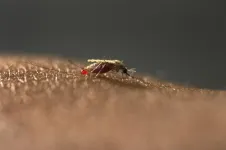(Press-News.org) Amid a sharp economic downturn in 2008, police departments around the United States experienced budget shortfalls that required them to enact cutbacks. A new study examined the effects on crime of budget shortfalls in two New Jersey cities--one of which laid off more than 10 percent of its police force while the other averted layoffs. The study found that the police layoffs were associated with significant increases in overall crime, violent crime, and property crime.
The study, by researchers at John Jay College of Criminal Justice and Rutgers University, appears in Justice Evaluation Journal, a publication of the Academy of Criminal Justice Sciences.
"Our study suggests that sudden and drastic reductions in the size of a police force via layoffs of police officers can generate significant increases in crime," explains Eric Piza, associate professor at John Jay College of Criminal Justice, who led the study. "In Newark, this meant approximately 110 additional violent crimes and 100 additional property crimes per month."
The study examined New Jersey's two largest police forces: the Newark Police Department, which released 13 percent of its police force on one day in 2010, and the Jersey City Police Department, which averted layoffs by reducing the amount of a previously requested raise and increasing the copay for medical prescriptions for officers. In addition, between 2012 to 2015, Newark's police department lost officers to attrition and did not hire new personnel, while Jersey City's department added more officers.
Prior studies on the effect of decreases in the size of police forces on crime have considered incremental reductions, finding less of an impact on crime, while this study looked at a sudden cutback.
Crime in both New Jersey cities had decreased prior to 2008.
Researchers used monthly crime counts from 2006 to 2015 to measure the effects of Newark's layoffs on crime and compared them with crime in Jersey City.
The authors found significant increases in overall crime, violent crime (murder, robbery, and aggravated assault), and property crime (burglary, larceny theft, and motor vehicle theft) in Newark, with overall and violent crime becoming progressively more pronounced each year. In contrast, in Jersey City, violent crime decreased steadily over the 10 years of the study, while property crime peaked in early 2009, but declined steadily afterwards.
The termination of police officers requires the remaining officers to do more with less, the authors note. In addition, letting officers go may force police to discontinue evidence-based crime prevention practices, which may impact crime levels.
The study's authors note several limitations of their work, including that the crime data they used, which is the primary source of such information in the United States, provides an incomplete picture of crime. Also, researchers did not interview police officers or Newark officials, which the authors suggest would have added context to their findings. Lastly, while pre-layoff crime trends in Newark were not significantly different than Jersey City, it is difficult to determine whether the cities would have maintained similar crime trends if layoffs didn't occur (which is a key assumption of evaluation research).
"As police departments determine whether to phase out specialized units to meet budgetary constraints and to enact reforms that may reduce budgets and size of police forces, our findings can inform the national debate over the impact of such actions on crime," notes Vijay Chillar, a Ph.D. student at Rutgers University, who coauthored the study.
INFORMATION:
A new machine learning algorithm based on mammograms can estimate the risk of breast cancer in women more accurately than current risk models, according to a study from Adam Yala and colleagues. The algorithm, which was tested with datasets from three large hospitals located worldwide, could help clinicians design guidelines for breast cancer screening that meet the need for early detection while reducing false-positives, test costs, and other issues associated with overscreening. Mammograms are the most common method to screen for breast cancer, as more than 39 million procedures are performed in the U.S. annually. However, their widespread adoption has not gone without ...
Working to develop new treatments for osteoarthritis, researchers at Washington University School of Medicine in St. Louis have genetically engineered cartilage to deliver an anti-inflammatory drug in response to activity similar to the bending of a knee or other motions that put stress on joints.
Among the early symptoms of osteoarthritis is pain in response to such movements -- motions that involve the so-called mechanical loading of a joint. Joint pain that accompanies bending or lifting can make it difficult to perform normal activities. But by altering genes in cartilage cells in the laboratory, the researchers have been able to program them to respond to the mechanical stress associated with movement and weight-bearing ...
The blog "Ladyplanet. Natürlich Frau sein" is quite certain: "Our cycle is linked to that of the moon. The most obvious connection is the length of the two cycles," it says. The newspaper "Berliner Tagesspiegel" comes to the opposite conclusion: "The length of women's menstrual cycles is an average value, for some it lasts longer, for others it is shorter. Even one and the same woman can have cycles of different lengths. If they really were connected to the lunar cycle, all women would have their fertile days at the same time," the paper's knowledge section reads.
So what is true? A team led by Würzburg chronobiologist Charlotte Förster has now used scientific methods to examine the connection between ...
Organelles continue to thrive after the cells within which they exist die, a team of University of Bristol scientists have found, overturning previous assumptions that organelles decay too quickly to be fossilised.
As described in the journal Sciences Advances today [27 January], researchers from Bristol's School of Earth Sciences were able to document the decay process of eukaryotic algal cells, showing that nuclei, chloroplasts and pyrenoids (organelles found within chloroplasts) can persist for weeks and months after cell death in eukaryote cells, long enough to be preserved as fossils.
Emily Carlisle, a PhD student from Bristol's School of Earth Sciences and co-author, was able to characterise the transformation of the organelles into ...
An analysis of long-term menstrual cycle records kept by 22 women for up to 32 years shows that women with cycles lasting longer than 27 days intermittently synchronized with cycles that affect the intensity of moonlight and the moon's gravitational pull. This synchrony was lost as women aged and when they were exposed to artificial light at night. The researchers hypothesized that human reproductive behavior may have been synchronous with the moon during ancient times, but that this changed as modern lifestyles emerged and humans increasingly gained exposure to artificial light ...
Larvae of a new malaria mosquito species are abundantly present in water containers in cities in Ethiopia. The mosquito, Anopheles stephensi, is the main malaria mosquito in India but only appeared on the African continent a few years ago. It has now been found in cities and towns in urban settings in Ethiopia, Sudan, and Djibouti. Researchers from the Radboud university medical center and the Armauer Hansen Research Institute in Ethiopia showed that the invading mosquito species is highly susceptible to local malaria strains. Malaria can therefore become an increasing problem for urban areas in ...
Pioneering work led by a joint China-UK consortium has revealed the origin of one of the world's most important ecosystems, the East Asian biodiversity "hotspot," thus solving a longstanding riddle as to what prompted its formation and evolution.
In a recent study published in Science Advances, a joint research team led by scientists from Xishuangbanna Tropical Botanical Garden (XTBG) of the Chinese Academy of Sciences, the University of Bristol (UK) and the Open University (UK) has revealed the first direct mechanism explaining how the growth of mountains in Northern Tibet drastically altered climate, vegetation and plant diversity in East Asia.
The researchers used an innovative climate model that simulates ...
(Embargoed for January 28, 2021 3 a.m. SPT; January 27th 2 pm EST, 2021) -- Note: this study is scheduled for publication in the Journal Science Translational Medicine)
A study presented today by Dr. Nobuyuki Takahashi of the Center for Cancer Research (CCR), National Cancer Institute (NCI), Bethesda, Md. at the IASLC World Conference on Lung Cancer Singapore demonstrates that small cell lung cancer (SCLC) may have an inherited predisposition and lays the foundation for understanding the interaction between genotype and tobacco exposure in exacerbating SCLC risk as well as potential therapeutic implications. Because tobacco is the dominant carcinogen, secondary causes of lung cancer are often diminished in perceived importance, especially in SCLC, the most lethal ...
A study has revealed for the first time the ancient origins of one of the world's most important ecosystems by unlocking the mechanism which determined the evolution of its mountains and how they shaped the weather there as well as its flora and fauna.
It was previously thought Southern Tibet and the Himalaya were instrumental in turning the once barren land of eastern Asia into lush forests and abundant coastal regions which became home to a rich array of plant, animal and marine life, including some of the world's rarest species. But new findings, published today in the journal Science Advances, conversely show Northern Tibet played the more influential role in this transformation which began more than 50 million years ago.
Scientists from a UK-China partnership, ...
By Elton Alisson | Agência FAPESP - Melatonin synthesized in the lungs acts as a barrier against SARS-CoV-2, preventing expression of genes that encode proteins in cells such as resident macrophages in the nose and pulmonary alveoli, and epithelial cells lining the alveoli, all of which are entry points for the virus. The hormone, therefore, prevents infection of these cells by the virus and inhibits the immune response so that the virus remains in the respiratory tract for a few days, eventually leaving to find another host.
The discovery by researchers at the University ...



